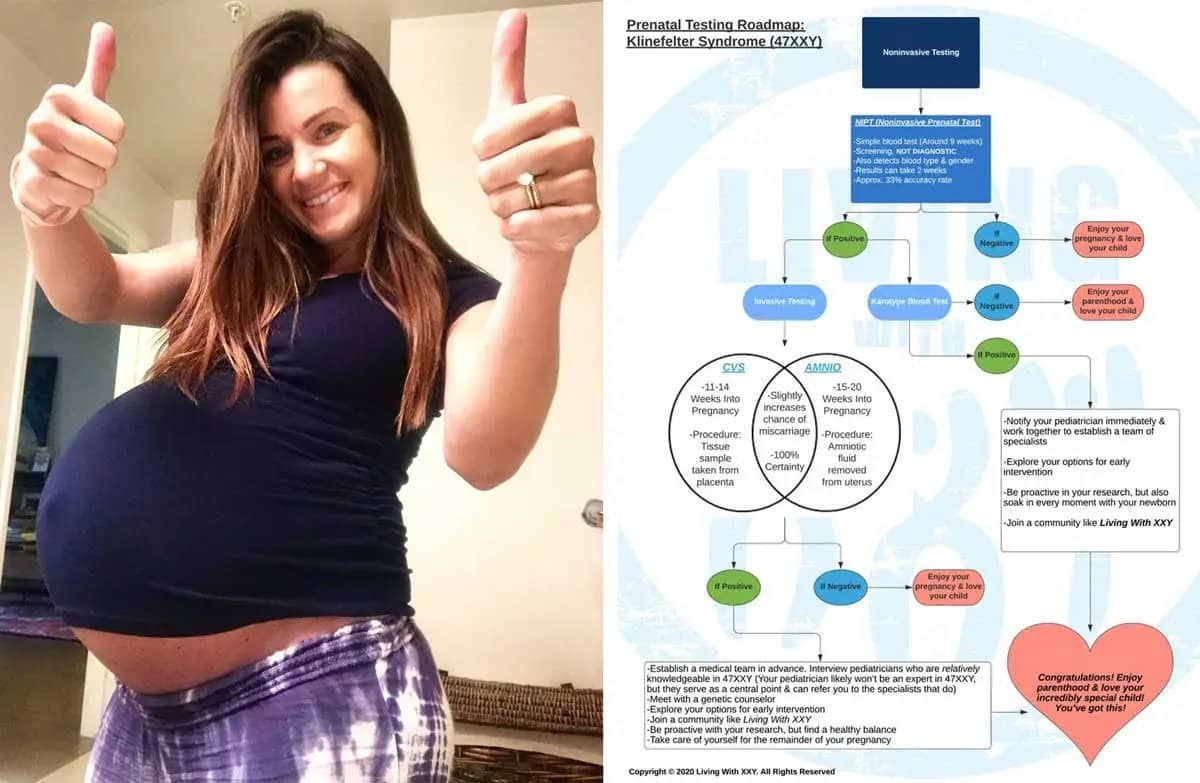
Klinefelter Prenatal Testing Guide
“You tested positive for Klinefelter Syndrome, therefore you’re expecting a boy,” stated the genetic counselor, sitting across from me with a large binder of what appeared to have an image of a chromosomal sequence with the words “47 XXY” splashed across the cover. This appointment was supposed to represent a day of joy upon discovering the sex of our baby and instead, I became paralyzed with a flood of emotions—fear, confusion, skepticism, and sadness as I digested this new and unexpected information. This certainly wasn’t my idea of fun gender reveal. My biggest question was “now what?”
I’ve created the below Klinefelter prenatal testing guide for expectant mothers (and fathers, of course) to help guide your next steps after undergoing genetic testing in the first trimester of pregnancy. Pregnancy is already a difficult journey, but adding additional tests and uncertainties surrounding a potential genetic condition with your unborn child can be unnerving. I hope this guide helps bring clarity and direction, while offering hope. No matter which outcome or route taken, my best advice is to enjoy your pregnancy, embrace parenthood, and love your child.
*The below diagram “Klinefelter prenatal testing guide” is based on my own experience and the content in not intended to be a substitute for professional medical advice, diagnosis, or treatment. Always seek the advice of your physician or other qualified health provider with any questions you have regarding Klinefelter Syndrome.
